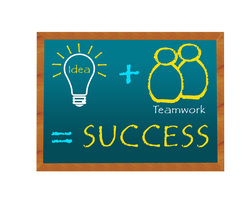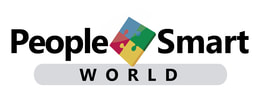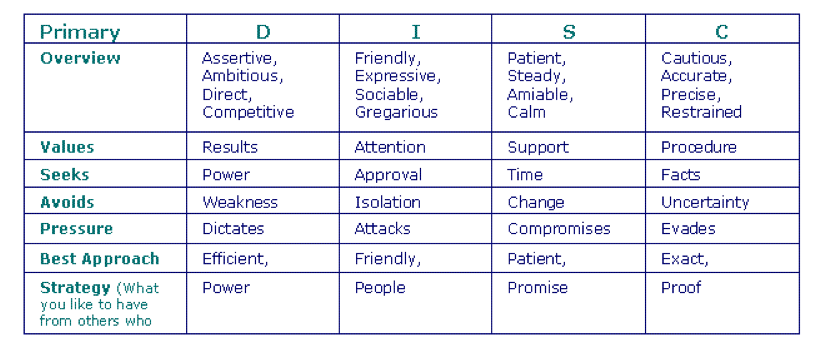 How come they don't understand us!? How come they don't understand us!? Everyone has experienced the frustration of not being able to communicate with another person... of not understanding what makes them “tick” or of not being able to figure out why they do what do. Haven’t you? The good news is that human beings are not all the same. The bad news is that human beings are not all the same! Whether this fact is an asset or a problem to you depends on how ‘people’ or ‘DISC’-literate’ you are! Have you ever noticed that not only do you not relate positively with everyone, but the same approach you use with one person may be totally ineffective with another? That’s because what motivates you isn’t always motivating to someone else - something that keeps Madison Avenue in business!) The good news is that each style is different – and each has its strengths and weaknesses. After all, you can’t be both strong and weak in everything. The bad news is that each person does not intuitively know how the other styles think or feel because we tend to reference everything against ourselves. So if it is obvious we are different, you may ask, “How can we learn more about what makes us each unique?” You do have a choice in how your life goes. It is between “learning by trial and error” and learning by studying and mastering a science. In the case of personality differences, you can start learning by first taking your own DISC personality profile. And even if you have already taken a DISC profile somewhere else, you can take it again in another focus – “Me at work,” “Me at home,” “Me in my personal or business partnerships.” You are changing and growing all the time. The question is, “How well do you know yourself NOW!?” So “Why DISCover your style” You Ask? Understanding what a DISC graph shows gives you a way to let others know how to best communicate with you. Without first understanding how you relate and view others you cannot be an effective communicator. Once you learn what each point on a DISC profile represents, you will know that it is more than words ‘defining’ your personality. It comes in your gestures, your response speed, the tone and volume of your voice, the style of clothes you tend to wear. Your report presents a non-threatening, scientific analysis of your answers to the DISC Personal Profile gives you a powerful understanding of yourself and others, a clearer insight into interpersonal behavior and relationship interworking, and a way to maximize your potential in any situation where other people are involved. The positive and prescriptive information gained from completing this self-study, professional growth profile provides the first step in becoming "People-Smart." 'PeopleSmart' people know who they are and are able to "read" the clues in other people's behaviors that suggest that person's likely motivated-needs and personal strengths. With just a little conversation, their "guesses" turn into openings for conversations, and thus this type of awareness makes it easier for them to:
I hope you will stay with it by continuing to follow our Blog, read our articles, and explore all the other types of profiles that will also give you another access to personal and business mastery. This journey we are on is to understand yourself and DISCover what it means to own the Magic of YOU! Better communication and less conflict is only a click away. Until next time, keep that smile on your face! It beautifies the world! Carol Dysart Great stops on the road to increasing your Beingness Quotient and becoming more “People-Smart” to make: ORDER ANY PROFILE: To order any profile for yourself at retail click here or give it as a gift to someone you love. Sample profiles are available on these pages. FREE NEWSLETTER: To sign up for our free newsletter and join our People-Smart Community click here
1 Comment
 Many of us spend our lives in the same job doing the same things. Everyday we get up, we go to work, we tend to our children, we do our housework, we cook, we garden the list is endless. Yet how many of us see creativity in what we do? How many of us see creativity in our relationships? Some of you might be saying to yourself, "me creative, you have got to be kidding!" I came across a utube video of Dewitt Jones. Dewitt worked as a National Geographic photographer for 20 years. He is a brilliant photographer and an inspirational speaker. If I had to choose one quote of his it would be... "look at the ordinary and see the extraordinary"! Everyone one of us have had moments in our relationships where they have been extraordinary. Take a look back to these times. If you look closely what was present for you? I bet you that there was passion, there was being in the moment and there was love. What if every day you could tap into those moments, could feel the feeling of being in an extraordinary experience and relationship? And what would be possible for mankind and the world if everyone chose to live a creative and passionate life. Here is the key...you get to CHOOSE. You get to choose how you see YOUR world. Your perspective creates how you experience the world. Dewitt puts it beautifully, he says we are looking through these lenses, and that we all have the potential to have a creative life. And I would like to add... to have creative relationships. So everyday ask yourself these questions: How can I use my creativity in my relationships today? Which lens am I choosing to look out from today? What actions will I take today that will take the ordinary and turn it into an extraordinary day? AND... What do you see in Dewitt's story for yourself?  Demystifying DISC Personality Style Compatibility... How come there are some people we meet for the first time that we like instantly. And there are some that we just wished would go a way! Compatibility, or the lack of it, is not such a mystery. Both rapport and tension are rather predictable, once you know what to look for. Here's the basic principle: In social situations, behavioral styles that are similar are attracted to each other. People with similar interests and habits are drawn to one another as friends and acquaintances. There's a sense of satisfaction in knowing you're among people who prize what you prize, enjoy what you enjoy, play by roughly the same rules as you do. If you're a Steadiness Style or Cautious Style, you're a more structured person who's not fond of surprises. Thus, you find stable, predictable relationships more satisfying. You get your needs met by being around those who won't embarrass you by, say, showing up in a magenta sports coat, or asking deeply personal questions upon first meeting you. Or maybe you're a faster-paced, more outgoing person, a Dominance Style or Interactive Style who thinks life's too short to worry about whether your tyres are properly inflated, or your socks match your tie. Who the heck's going to know or care 100 years from now, right? The Big Ten... And How They Perform SOCIALLY So what happens when these sometimes-contradictory types get together? Well, the four basic behavioral styles mix and match into ten combinations. Behavioral science research shows clearly which combinations mesh or clash naturally. For starters, people with similar tendencies are most compatible with one another socially. That's because those with common interests, habits, and approaches help reinforce each other’s self-esteem. So it won't surprise you to learn that the most naturally compatible combinations in SOCIAL situations are:
Where, you ask, are the Dominance Styles? Well, they also tend to flock to one another - at least for a while. But they possess such a strong competitiveness that even the Dominance Style with another Dominance Style relationship isn't quite as naturally harmonious as the others. That pairing does, however, show up in the following moderately compatible category:
Compatibility doesn't come quite as naturally in these cases. Some relationships that we find ourselves in especially in a work environment need nurturing. But with effort, progress is possible and, in fact, success in working with less compatible individuals can be an esteem builder for some. Dominance Styles and Interactive Styles share an outward focus and often-similar interests. Steadiness Styles and Cautious Styles, on the other hand, are both inward-oriented and may like the same kinds of activities. Both Interactive Styles and Steadiness Styles aspire to be in a supportive relationship. Usually, though, it's the Steadiness Style who's in the giving role and the Interactive Style who's the receiver. Meanwhile, the fast-paced, extroverted Dominance Styles and Interactive Styles commonly find it hard to develop rapport with the easygoing, quieter Steadiness Styles and Cautious Styles, who are less decisive and enthusiastic. And the Steadiness Styles and Cautious Styles, in turn, find the Dominance Styles less desirable because they're too pushy, too loud, and often demand too much of them. Therefore, of all ten combinations, these three pairs are often the least naturally compatible SOCIALLY:
To the Dominance Style, who just wants to get things done, and to the Interactive Style, who just wants to have fun, the Cautious Style and Steadiness Styles can be drags. While Steadiness Styles often resign themselves to tolerate the forwardness of Dominance Styles and Interactive Styles, the Cautious Style frequently just prefers to be alone. What's more, even when relaxing, the Cautious Style wants to do all things right. Whether it's just grilling hot dogs, chatting about politics, or setting up the croquet wickets, the Cautious Style sets standards and judges himself and others by how they meet them. The Cautious Style, in the eyes of the Dominance Style or Interactive Style, is not living as much as he is just serving time. By and large, never the twain shall meet - at least unless and until The Platinum Rule is practiced - Do unto others as they would have you do unto them. Learning from Each Other On a positive note, there is a fascination factor in these three pairings, and bridges can be built. Given positive energy, the natural differences can fuel attraction, particularly when one style sees what it can learn from another. A Dominance Style, for example, may see how he can become more patient and responsive to others by taking a cue from a Steadiness Style. A Steadiness Style, meanwhile, may be able to draw on the Dominance Style's strengths for taking charge and accepting risk. It all comes down to not judging another’s behaviour. Just observe it and then demonstrate it if you are looking to adapt your style for being a certain way in a situation. Similarly, a sensitive Interactive Style can see how she can learn discretion from the Cautious Style, and the Cautious Style perceives that she can become more relaxed and sociable by being around the Interactive Style. Perhaps the most difficult hurdles socially are posed by the Dominance Style-Cautious Style relationship. For it to work, both must yield their personal control needs, with the Dominance Style deciding to give the type of space the Cautious Style needs, and the Cautious Style learning to be much more direct and open about their concerns with the Dominance Style. It's Different when it comes to TASK When it comes to tasks, whether it's doing a project at work, purchasing a family car, or just balancing the checkbook the dynamics differ dramatically. Here, the “likes” who are drawn to one another socially don't necessarily attract as much as they compete or even conflict. Now their similarities can get in the way because they have the same needs. After all, to complete a task, one must have resources, rewards, time, space, and attention. But there are only so many of those to go around. So when those needs aren't met, tension and conflict can result. When one partner feels a need to “win,” for instance, the other one may sense he or she's been shortchanged. The frequent outcome: resentment. But, before getting into which pairs clash, let's look at the most naturally compatible combinations TASK wise:
See a pattern here? You bet! The Steadiness Style gets along with everybody in a task situation. He or she's the universal antidote for disharmony. It's the Steadiness Styles' most distinctive trait. They're supportive workers who exert a calming, stabilizing influence. Naturally interested in others and in making a contribution, they enjoy being productive partners. No wonder they're everybody's favorite. The moderately compatible combinations, as far as working on TASKS together, are:
Cautious Styles loom large in this second grouping. While not as easygoing as Steadiness Styles, they are sensitive to others' feelings and have a passion for excellence that others usually recognize. Interestingly, Cautious Styles figure in many of the least compatible combinations socially, but among the highest in tasks. This suggests that others appreciate the quality and thoroughness of their work, even if the Cautious Styles aren't always viewed as being a lot of laughs. Last come those combinations that are least compatible because they tend to see one another as competitors:
Dominance Style-Dominance Style combinations work fairly well socially but when it comes to tasks, a Dominance Style's competitive nature and need for control can stymie cooperation, especially with like-minded Dominance Styles. As for the Dominance Style-Cautious Style, there's a fundamental clash in the Dominance Style's need for speed and control versus the Cautious Style's penchant for being slower paced and systematic. Notice that while the Interactive Style-Interactive Style pair was ranked as among the most socially compatible, now they are likely to be the least productive as far as working together on tasks. That's because neither is motivated to deal with task details. Similarly, Dominance Styles and Interactive Styles also have moderately high social rapport but plummet to the lowest rungs of compatibility when tasks are involved. That's because they both tend to want to delegate. But don't give up yet on those whose personal style may not be a perfect fit with the situation. With some effort at understanding and applying The Platinum Rule, you can adapt your compatibility so that you can work successfully with anyone. To find out what style you are why not do a DISC Profile Assessment CLICK HERE  DISC Conflict Resolution Systems It took me a while to understand what I do in terms of the problems most people have, since I work primarily to optimize how people relate both at home and in the workplace. DISC “Behavioral Assessment Profiling” or Conflict Resolution Systems sound rather dry and academic, don’t they? That’s precisely the problem. Conflict resolution systems are best understood in context. Conflict Resolution Systems for Team Building One crucial factor in work environments is team building. Teamwork can spell the difference between meeting deadlines or costly delays. It is vital to achieve synergy by harnessing talents of individuals in such a way that maximizes productivity without creating conflicts. Often people’s behavioral styles collide in ways that can lead to misunderstandings. By assessing behavioral styles with conflict resolution systems it is possible to develop methods to work around differences while clarifying roles, which are fully compatible with people’s behavioral styles. Ultimately team building amounts to effective cost containment and production efficiency in a people-friendly work environment. The results are loyal employees and increased profits. Know and understand what the four primary DISC styles value, seek and avoid to create a people-friendly work environment. Conflict Resolution Systems for Family Mediation
It seldom occurs to people that dissimilar behavior types might arise spontaneously within a family. All too often, people assume that different behavioral styles are somehow “bad” or the result of bad parenting. This is not the case. A more realistic perspective involves the realization that although the majority of family members may display certain behavior styles, there may be a few family members that don’t. This may occur as a family joke or worse might result in the minority members being labeled “black sheep” and being subjected to unjust emotional or physical punishments. Using conflict resolution systems allows families to understand one another’s behavioral styles and to work together effectively as a cohesive family unit. Frustrations turn into appreciations. Marriages and family-owned business are saved. Conflict Resolution Systems for Career Development Having a job you love is a key to happiness for most people. Even when you have a job you love, there can be people in the workplace that pose difficulties. Conflict resolution systems help you to:
If you are in a leadership position and would like to have a complimentary profile and consultation, please CLICK HERE to fill out the form. Leave your phone number (optional) if you would like to be called, otherwise responses will be via email. Please also select and let us know when you contact us, which profile is of interest to you by viewing some of our ONLINE SAMPLES. |
AuthorSandra is very passionate about supporting others to be the best they can be through sharing her stories and experiences she has gained along the way... Categories
All
Archives
March 2022
|
Partner with PeopleSmart
© Copyright 2024 - PeopleSmart Enterprises NZ Ltd. All Rights Reserved.
Privacy Policy


 RSS Feed
RSS Feed